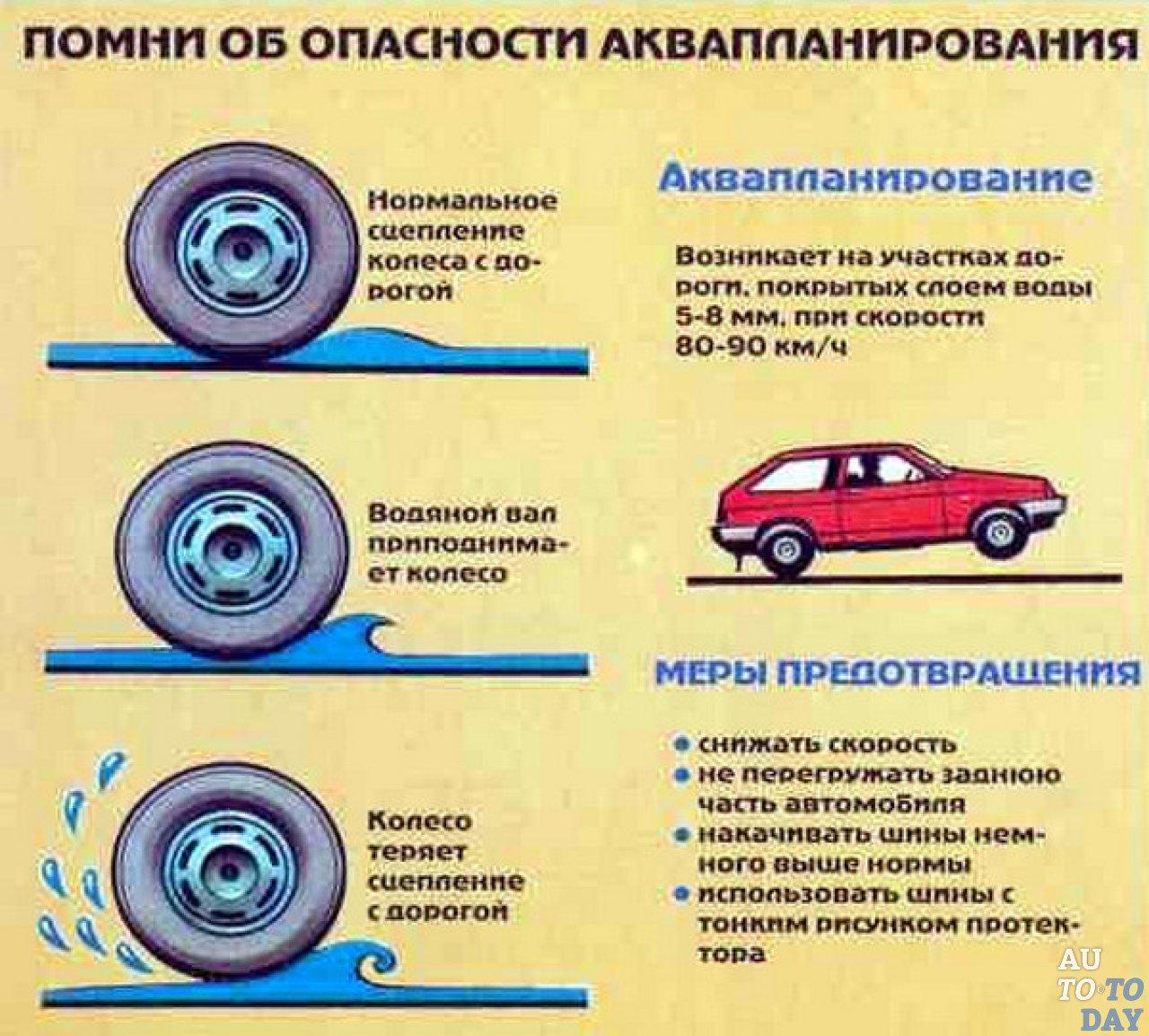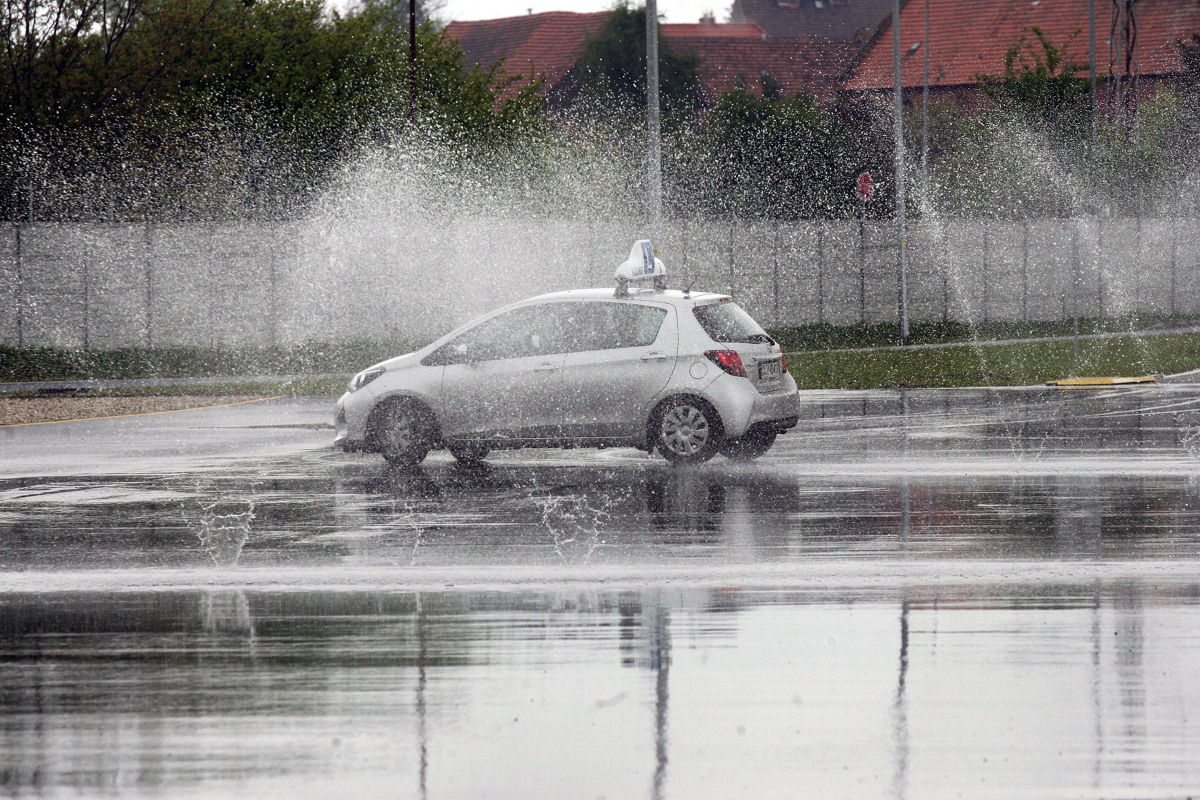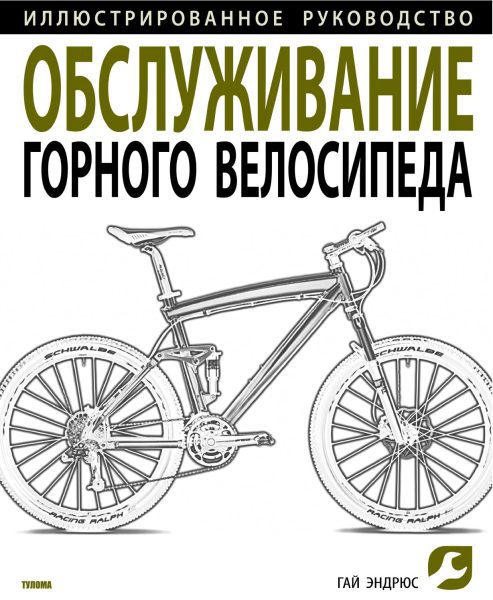
Aquaplaning. What is it and how to deal with it?
 Hydroplaning is a dangerous phenomenon that occurs on a wet surface, the consequences of which can be similar to skidding on ice.
Hydroplaning is a dangerous phenomenon that occurs on a wet surface, the consequences of which can be similar to skidding on ice.
The phenomenon of hydroplaning is the formation of a water wedge between the tire and the road, on which the car begins to slip uncontrollably. This is the result of several factors: worn or low-quality tires, too high speed and water accumulation on the road and in the ruts.
Consequences of aquaplaning
planing could result in loss of vehicle control and a serious accident. The risk of skidding and loss of traction increases with vehicle speed, but there is no universal limit to skidding. Drivers can reduce the chance of hydroplaning if: adjust your speed to difficult road conditions and take care of quality tires – with the right pressure and the right tread.
- The faster the car travels on wet surfaces, topics the surface of the tire hits the water harder on the road. This effect leads to an increase in the hydrostatic pressure of the water because it cannot spread out to the sides fast enough. The phenomenon of hydroplaning occurs when the value of this pressure is higher than the pressure of the car on the road - the car cannot push the liquid away and the water begins to lift it above the road - explainsPiotr Sarnecki, CEO of the Polish Tire Industry Association (PZPO).
See also: Sobriety test. Changes for drivers
Correct pressure level
Proper tire pressure will help maintain traction - the lower the level of this parameter, the easier it is for water to push the vehicle off the road, which makes it "floating". Proper tread depth will ensure fast and efficient water evacuation from under the wheel. Only high-quality tires will give the driver a guarantee of maintaining the appropriate parameters in dangerous traffic situations - not only immediately after their purchase, but also after tens of thousands of kilometers of operation.
In autumn and winter, winter-approved winter tires or all-season tires will most effectively minimize the factors that contribute to hydroplaning. Such tires - thanks to the construction of a special, soft rubber compound - it will maintain its driving performance when the air temperature drops below 7°C in the morning. Winter tires feature tight grooves and special sipes that help wick away water, snow and mud.
- Safety should be the priority of every driver on the road. Even the most modern cars with advanced security systems are of little help if the vehicle is deprived of the main driving condition - road grip, which is provided by good quality tires - points Sarnetsky.
How to cope?
The consequences of hydroplaning can be dire - so what should any driver do if he gets out of control? First of all - the gas leg! Also, do not make sudden movements with the steering wheel. It is the inadequate reaction of drivers that often causes accidents. - be careful and calm, hold the steering wheel firmly, and at the same time let the car slow down so that the tires stop floating on the liquid cushion.
– When it rains and on the road with puddles, it is worth slowing down even to a speed lower than the speed allowed by signs and keep at a great distance from vehicles – the braking distance in such conditions is much longer - adds Peter Sarnetsky.
See also: Seat Ibiza 1.0 TSI in our test
